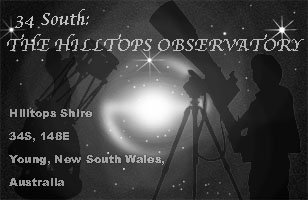For our purposes as amateur astronomers, the number of observable globular clusters is limited to be certain. Because the preponderance of these object form a halo around our galaxy’s central bulge, they tend to be more numerous during the late spring into the autumn months here in the northern hemisphere. Many observers, particularly those with less experience, tend to believe that one glob looks pretty much like another. However, as one starts to study them visually with a more experienced eye, subtle, and sometimes not so subtle differences begin to emerge.
Most observers have their favorites of course, typically depending upon their location and which celestial hemisphere offers them the best access. Regardless of where the observer lives, the majority seem to truly enjoy observing a bright, beautiful globular cluster. They can be entrancing, with some revealing little to no resolution of its member stars, while others are more easily resolved into countless stellar points formed into a tight rounded form.
The purpose of this article is to introduce you to a classification methodology for these objects that many observers know little about, or even perhaps haven’t even heard of previously. In the Harvard University Bulletin No. 849, on pages 11-14, astronomers Harlow Shapley and Helen Sawyer published their results on August 1, 1927. They studied images from Harvard’s Bruce 24-inch doublet telescope of the 95 globular clusters that were known at the time in the Milky Way. They then individually classified them into twelve categories based on their stellar density into the core of each cluster. This study became known as the Shapley-Sawyer Globular Concentration system. While it is not particularly important in terms of the science of astronomy today, it was still an important study at its time as astronomers were trying to come to grips with exactly what they were observing and imaging in the visible universe at that time.
The twelve categories within this study are given below. Note that they utilized Roman numerals for their numbering system, though in practice I typically utilize English numerals when I refer to the classification of a globular in my observing notes.
Class Description
I High concentration toward the center
II Dense central condensation
III Strong inner core of stars
IV Intermediate rich concentrations
V Intermediate concentrations
VI Intermediate
VII Intermediate
VIII Rather loosely concentrated towards the center
IX Loose towards the center
X Loose
XI Very loose towards the center
XII Almost no concentration towards the center
Now that we have a basic understanding of how this classification system works, it does bring up the question for the amateur observer – can I truly tell the difference visually in the structure of the clusters I observe? Well, to be honest it can be very difficult when dealing with adjacent concentration levels within the scale. As expected if you view a Class I globular then a Class XII cluster you can definitely see the differences. Even moving a few points on the scale one can begin to see some subtle differences with careful study.
Honestly, this article is all about getting you out there to chase and observe globular clusters – or image them if that is your area of expertise. So, I would not get overly wrapped up in trying to discern a Class I from a Class II – unless you truly wish to get that detailed. The primary goal here is to observe (or image) the Shapley-Sawyer Globular Concentration scale. This is a fun project, that gets you to thinking about the subtle differences between globs, and get away from what some feel is a “see one, you’ve seen them all” type of mindset. I could of course attach an example image of each of the various classes. However, I do not have the original images that Shapley and Sawyer utilized to construct their system. Plus as I've stated, it can be difficult to discern obvious differences as you move through the scale step by step. Suffice it say, we will not get to that level of detail here. Rather this is simply a project to get you out under a dark sky with a focus on globular clusters, and the added bonus of learning about this classification attempt made nearly 100 years ago.
So what are good examples of each classification level within the system? Well I can tell you, if you have observed all of the
Class Examples
I M75,
II M2, M80,
III M54,
IV M15, M28, M62, M92,
V M5, M13, M30, M53, M69, M70, M79,
VI M3,
VII M10, M22,
VIII M9, M14, M19,
IX M4, M12, M72,
X M56, M68, M107,
X-XI M71**
XI M55,
XII
**Note: This special category was added decades after the Shapley-Sawyer scale was devised. At the time they worked on this system, M71 was considered a very rich open cluster. This wasn’t changed until the 1970’s when it was determined to be a loose globular. It was given this cross-over designation within the scale after that point. So presumably one could include it in either X or XI at their choosing.
Correction: My good friend Ed (member 10538) advised me of some errors in my original article. Specifically that the objects M12, M55 and M107 were duplicated with their
Correction: Further, Ed mentioned the objects NGCs 1783, 1831, 1846 and 1978 as being open clusters. My article was based on the 1927 original paper by Shapley-Sawyer in which they recognize those four objects as globular clusters. In researching these after Ed contacted me, I found that sources for data on these objects are a little bit of a mixed bag. But for the most part, sources (both amateur and professional) indicate that NGCs 1783, 1831 and 1978 are considered globular clusters.




